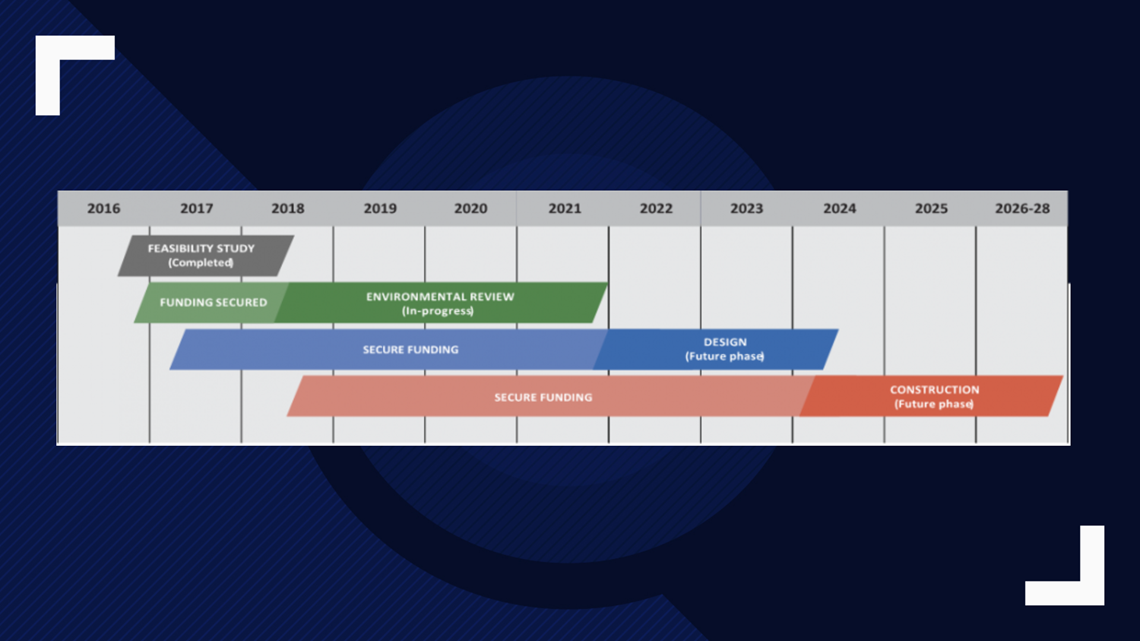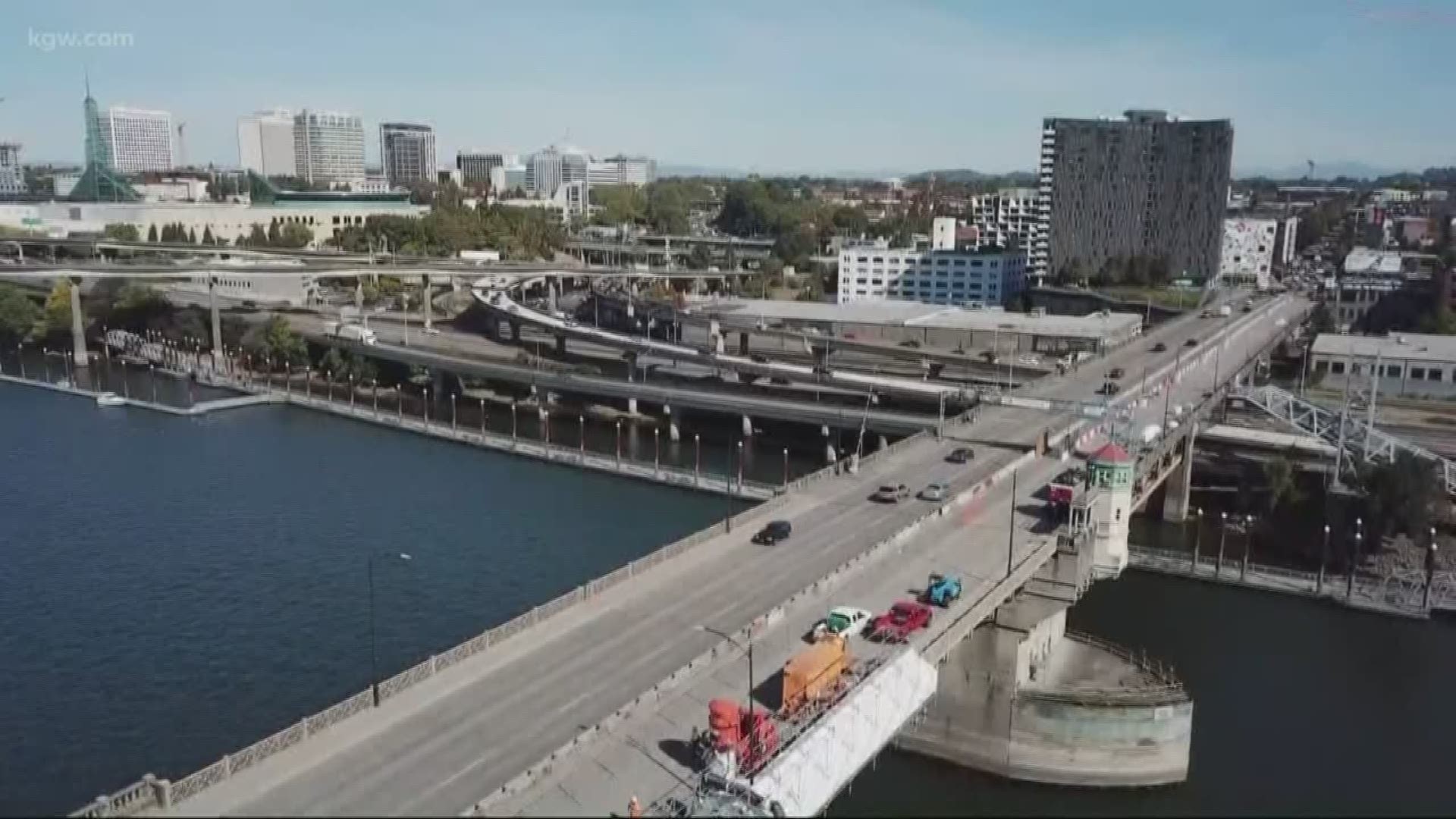What could a new Burnside Bridge look like? PSU students pitch creative ideas to county leaders
Multnomah County is in the middle of a years-long process to determine the future of the Burnside Bridge, so that it can withstand a major earthquake.
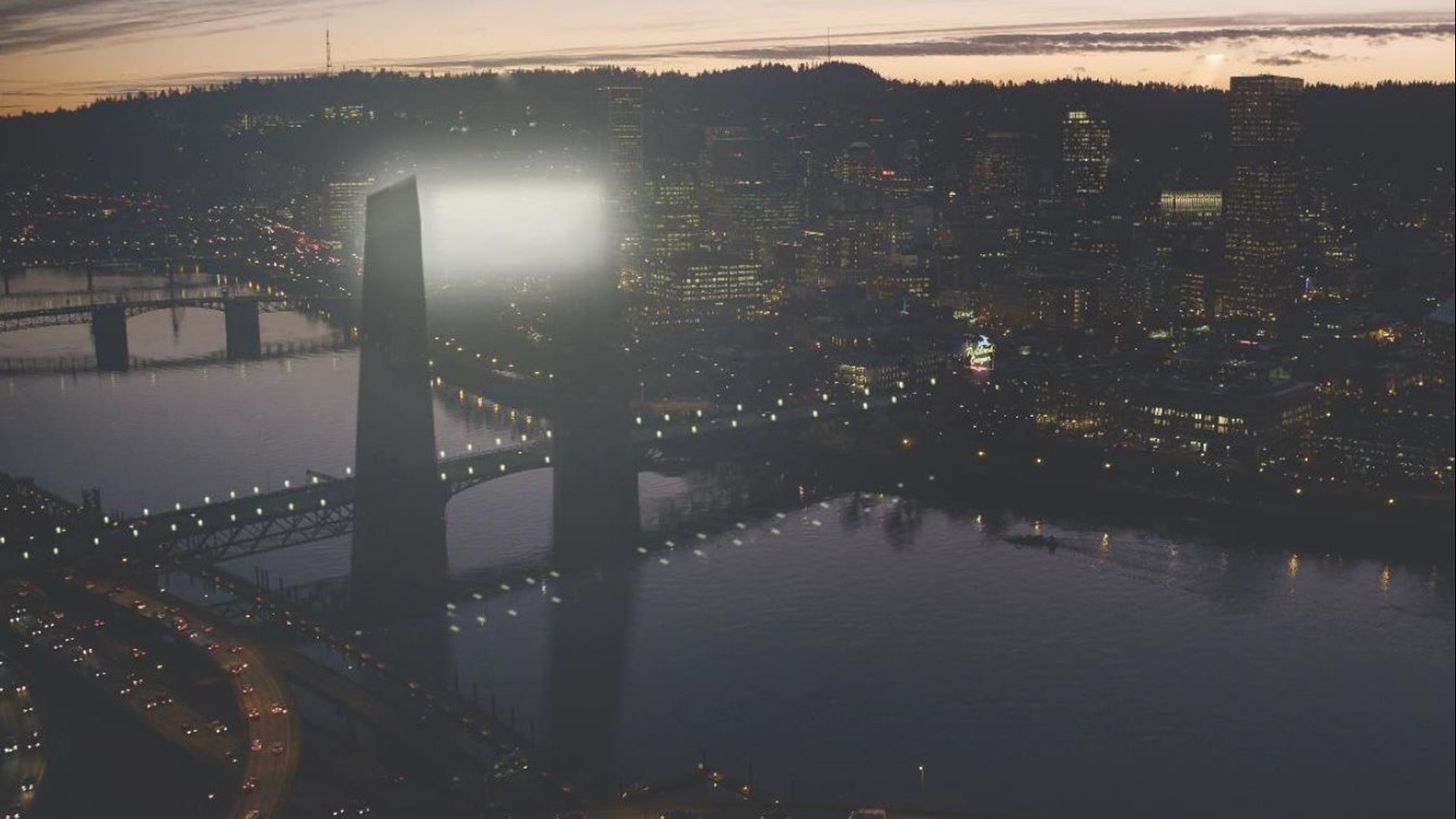
Editor's note: Video is from September 2018
PORTLAND, Ore. -- It is well known that as currently designed, the Burnside Bridge, along with many of Portland’s bridges, would likely crumble when ‘The Big One’ hits.
It would be especially problematic for Portlanders if the Burnside Bridge collapsed because it is designated as a regional lifeline, one that will provide the crucial connection between Portland’s east and west side for emergency response and recovery following a devastating natural disaster.
That’s why Multnomah County has spent the past couple years studying options for how the bridge can be improved, so that it will survive the anticipated Cascadia Subduction Zone earthquake.
Four bridge improvement options
The county reviewed more than 100 possibilities for the future of the Burnside Bridge during its feasibility study, and ultimately narrowed down the alternatives to four options for the bridge’s future. They range from retrofitting the existing bridge to replacing the bridge.
Option 1: Enhanced seismic retrofit
Upgrade the existing bridge to meet current seismic standards. Rebuilding above the freeway or railroad tracks is not an option, so that portion of the bridge will be replaced.

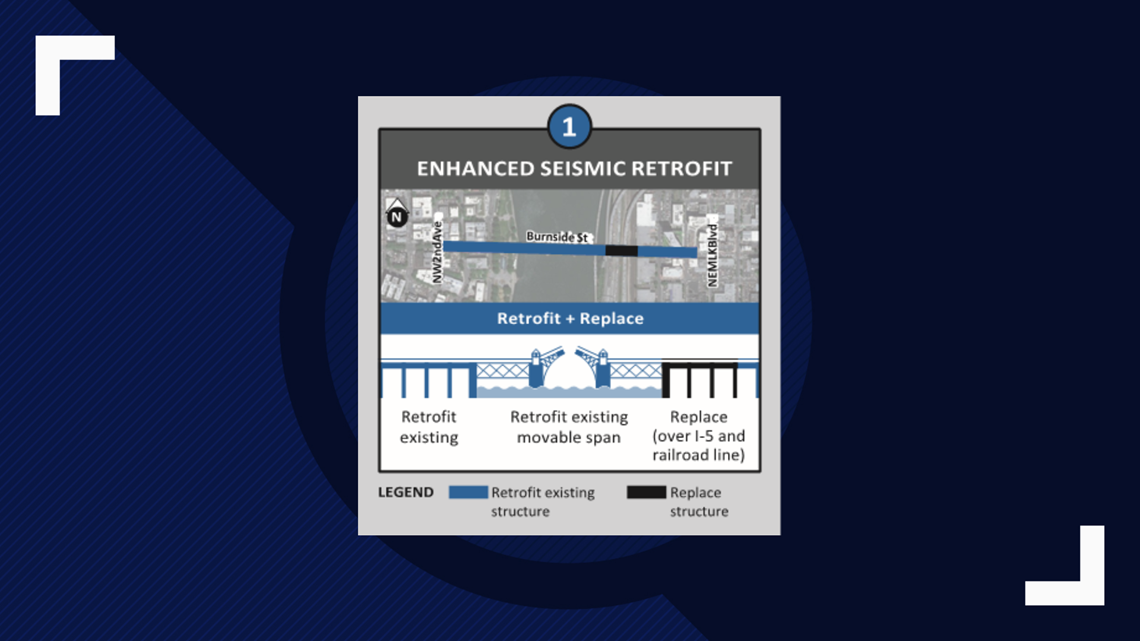
Option 2: Replacing the bridge with a new fixed bridge
The bridge wouldn’t open like the current one does, but it would be tall enough to allow ships to pass underneath without stopping traffic above.

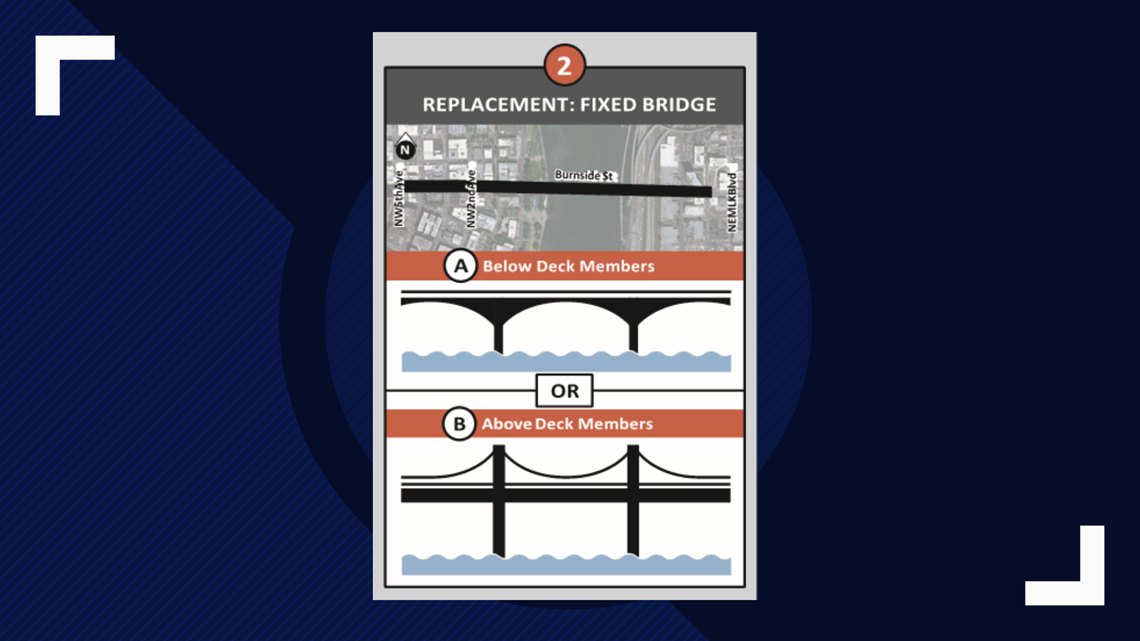
Option 3: Replacing the bridge with a new movable bridge
The new bridge would be at the same height and location as the current bridge.

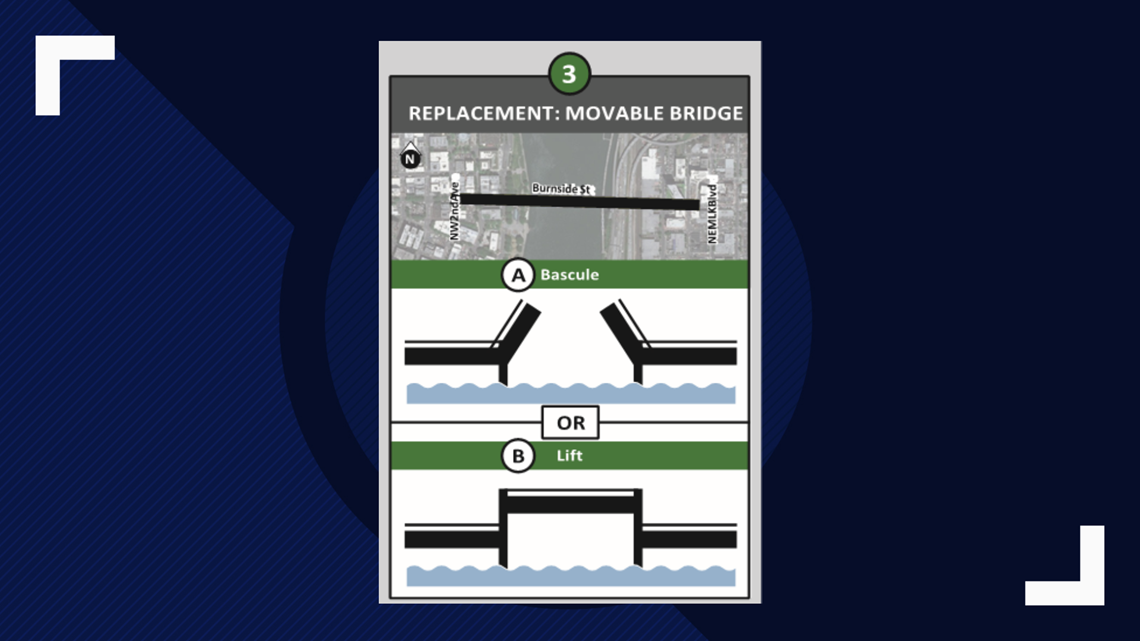
Option 4: Replacing the bridge with a new movable bridge
This fourth option would be similar to the third option but add a connection to Northeast Couch Street.

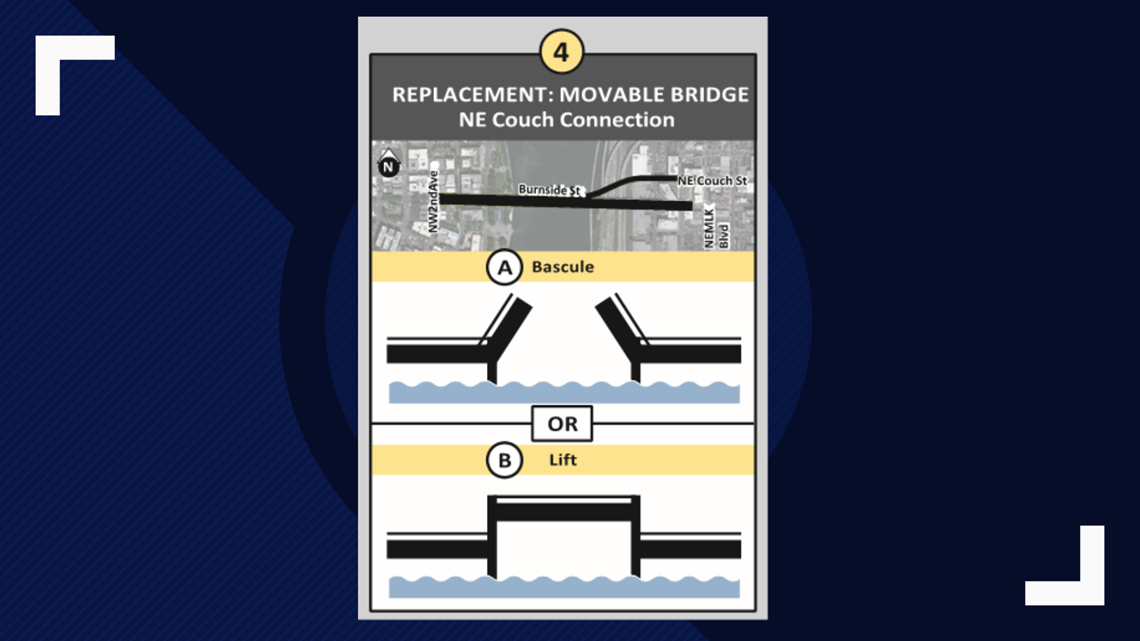
Reimagining the Burnside Bridge
While the county continues to do its due diligence, it sought perspective from a unique group of experts: Portland State University Master of Architecture students.
Over the course of the project, students received feedback from county officials and engineers, and last month the students revealed their ideas for how the Burnside Bridge could be better designed to serve the Portland community both before and after a massive earthquake.
Some of the students’ ideas were imaginative, such as an iconic light fixture that could act as a beacon (or a bat-signal of sorts, as Willamette Week reported) to help people orient themselves following an emergency event.
“We loved how the students thought outside the box and came up with big ideas that represent their time in history and their creative ideas for how the bridge could be earthquake ready and how that could impact the look and design of the bridge,” said Mike Pullen, communications coordinator with Multnomah County. Pullen worked with students throughout the duration of the project.
Here’s a look at seven themes from students that resonated with the county.
Theme 1: Provide a physical connection to the river
After the earthquake, river access will be important for evacuations and delivery of emergency supplies.


Theme 2: Create better connections to Waterfront Park and the Eastbank Esplanade
Waterfront Park and the Eastbank Esplanade could be important routes for people seeking refuge following an earthquake. Therefore, the bridge needs to be connected to those paths.

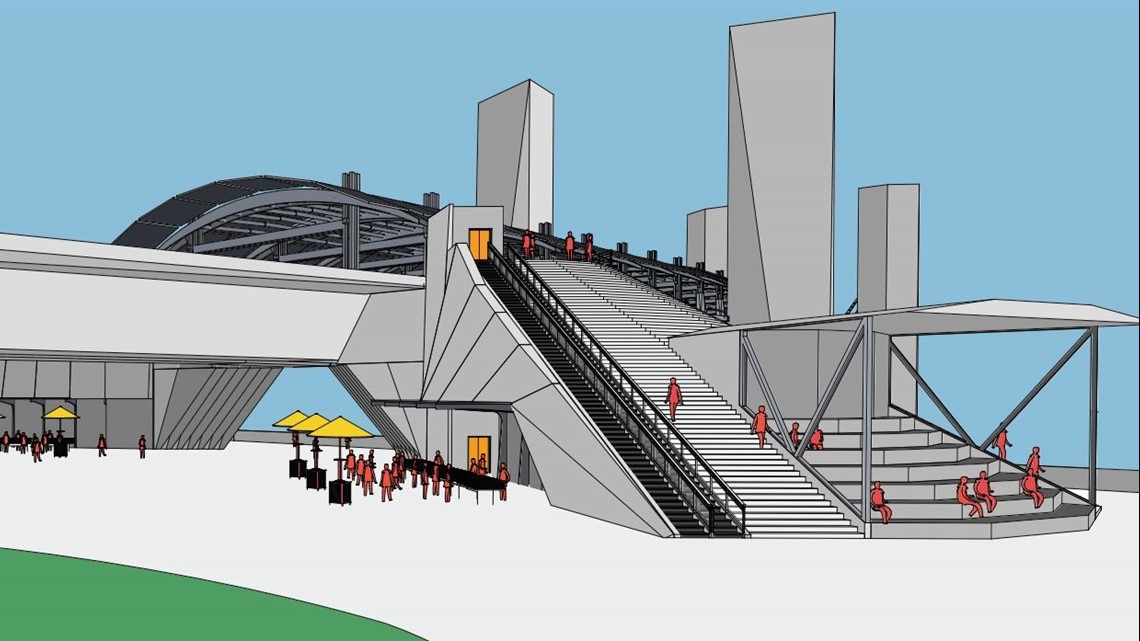
Theme 3: Digital or projection imagery on the bridge
The projections could display art or provide helpful commuting information. After an earthquake, it could display critical information about supplies and reuniting with loved ones.

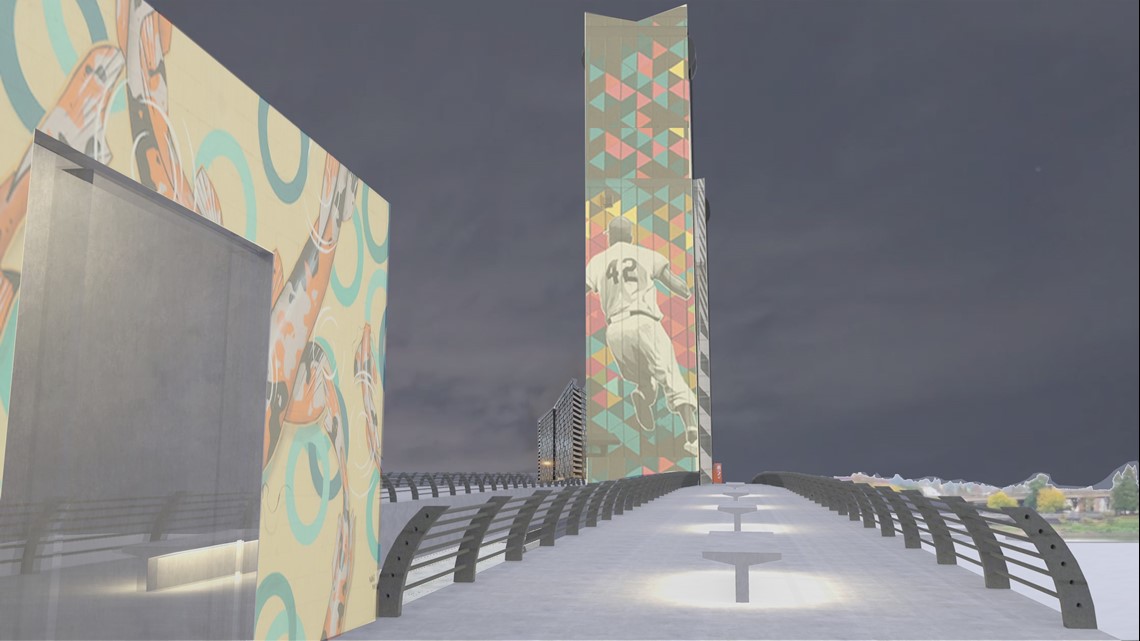
Theme 4: Make the bridge into a ‘beacon’
The bridge could be an iconic element for the city and serve as a way for people to orient themselves in the event of an emergency.

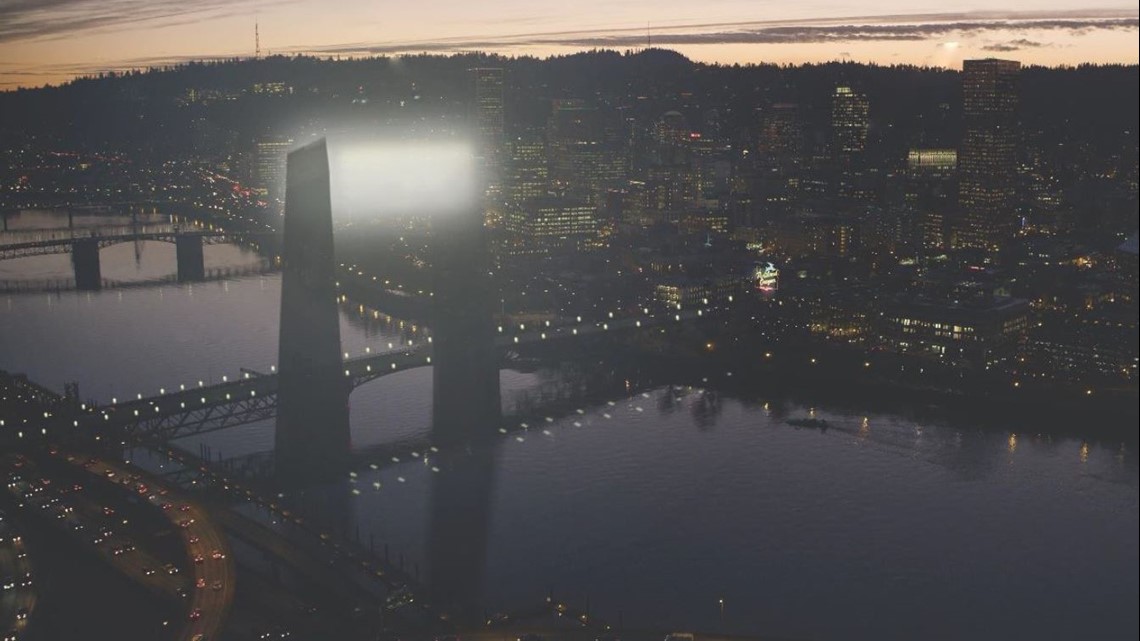
Themes 5 and 6: Make the bridge more friendly for bicyclists and pedestrians
The idea is to give more protection for pedestrians and bicyclists who cross what could be an iconic bridge. A barrier could give people on opportunity to stop on the bridge and enjoy the view.

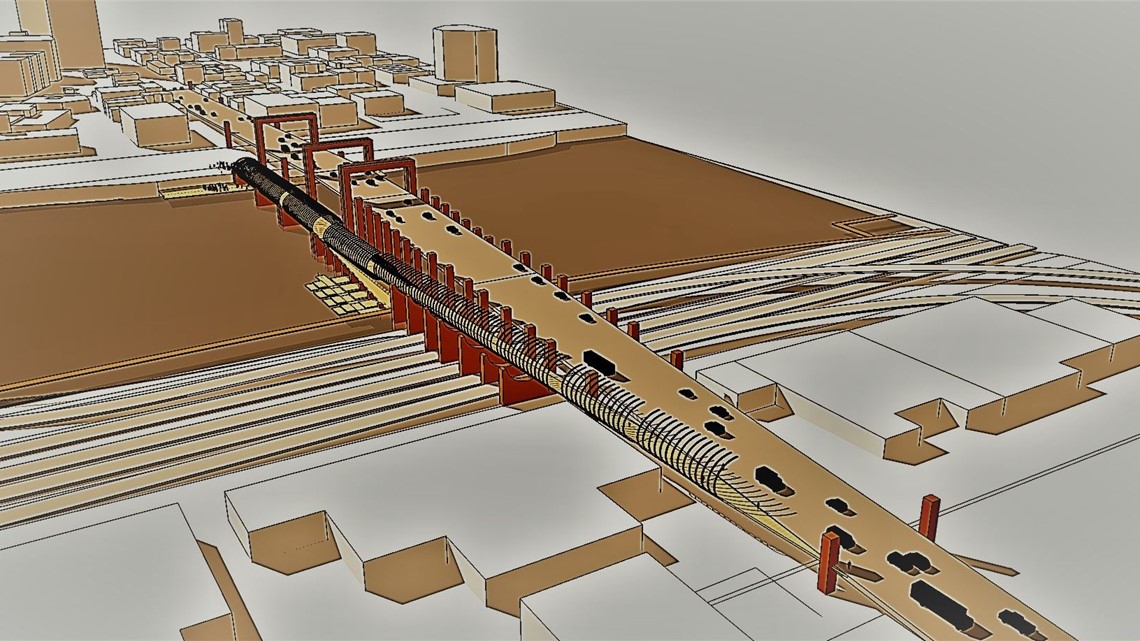

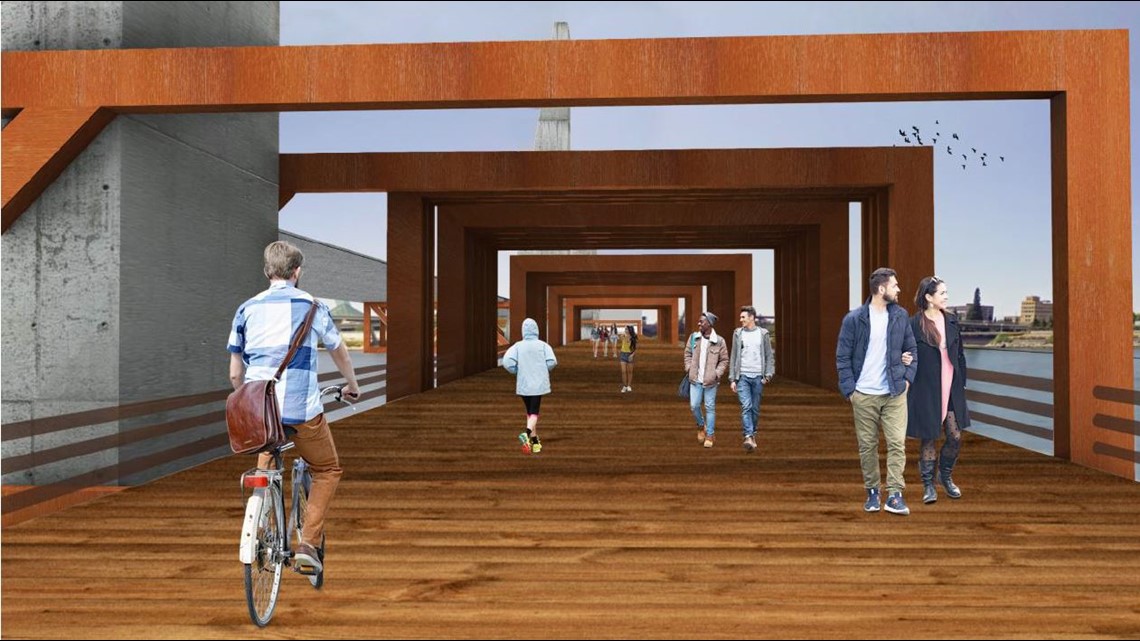
Theme 7: Strategies to make space safe and desirable under the bridge
Nearly two-thirds of the bridge is over land, most of which is currently uninviting. Students developed strategies to bring more light and connections to the area, and explored what infrastructure would be needed for events like markets and festivals.


Despite the wide range of ideas, the message from students was clear: Design a bridge that serves multiple purposes.
Pullen said some of the students' concepts “will definitely become a final part of the project.”
“In short, we were thrilled to work with these talented architecture students and we will definitely reflect on their concepts as we approach the project's design phase,” Pullen said.
What's next?
The county is now going through the environmental review process for its four bridge options.
During the review, the county will examine how difficult it will be to build the different type of bridges, how much they would cost, the impact on the environment and community, and of course, if the bridges would withstand a major earthquake. At the end of the process, which is expected to last through 2021, the county expects to have a single option to move forward with.
Design work and construction would then take place from 2022-2028, possibly with some of the ideas from PSU students incorporated.

